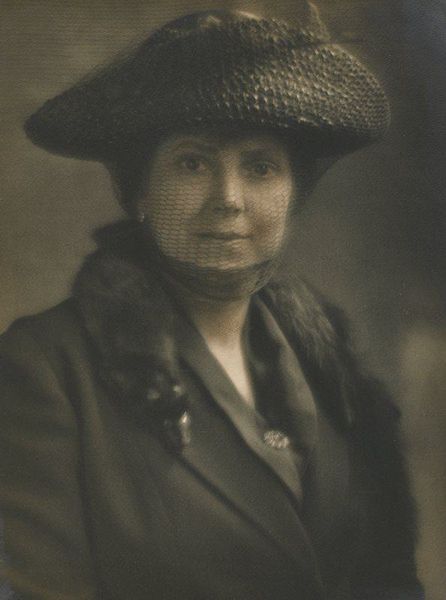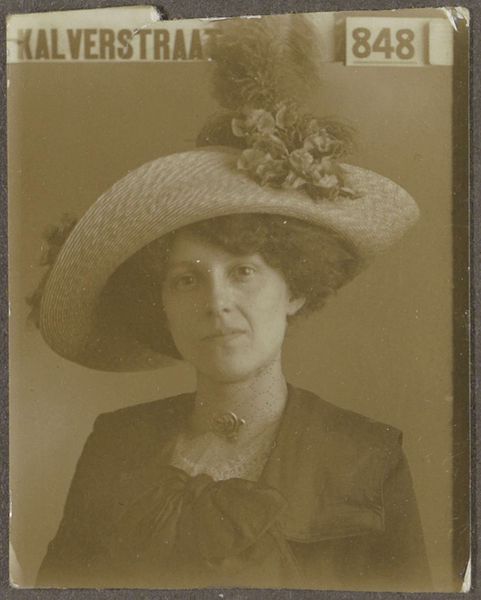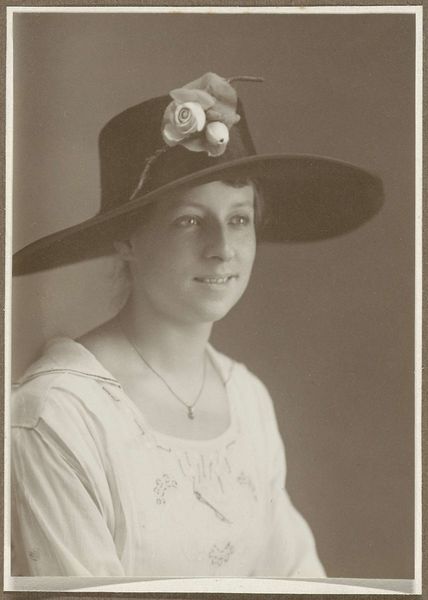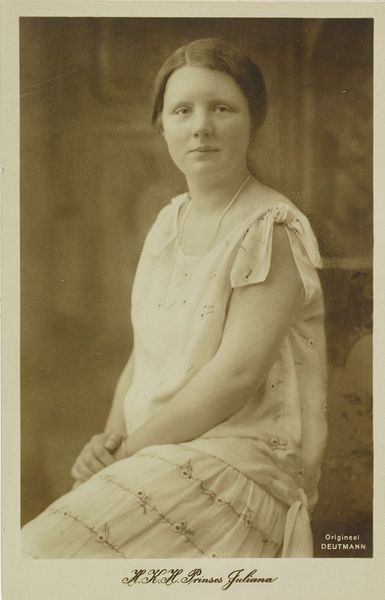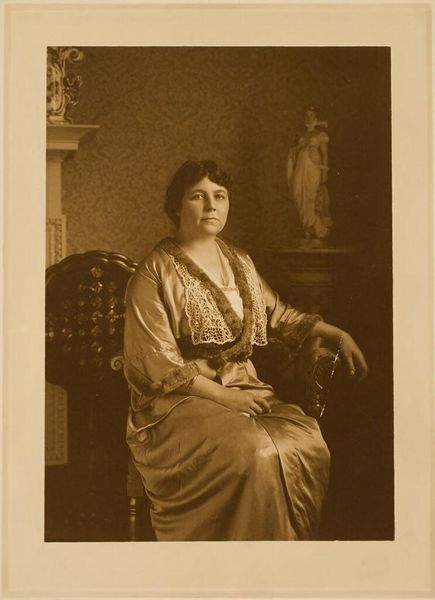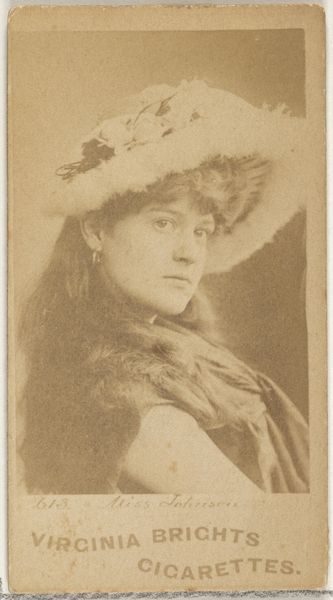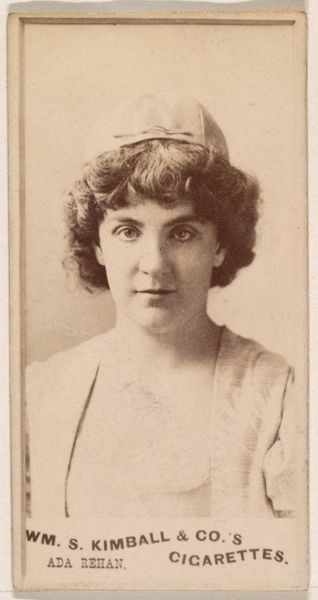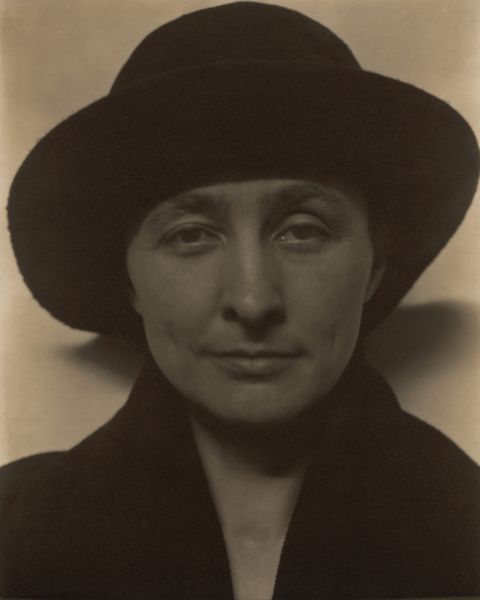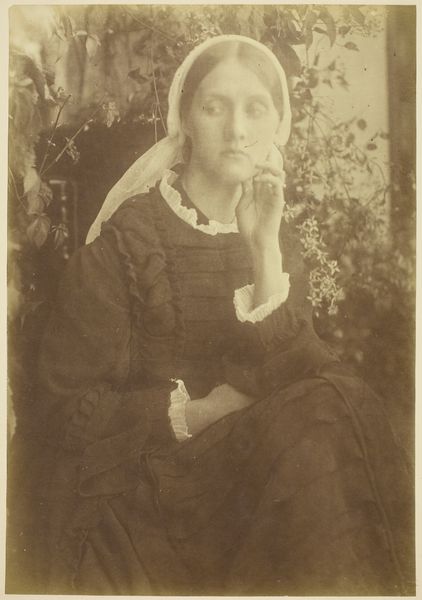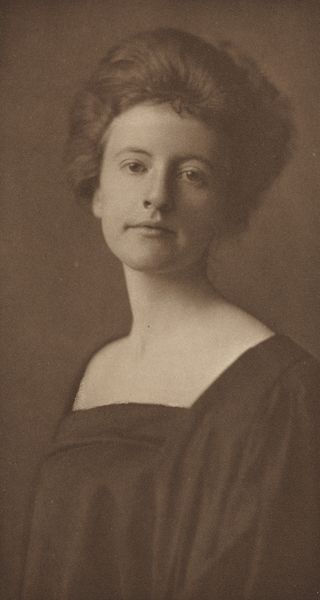
Dimensions: 11 3/4 x 8 3/16 in. (29.85 x 20.8 cm) (image, sheet)
Copyright: No Copyright - United States
Curator: There's an immediate intimacy in this gelatin-silver print. I feel almost as if I'm intruding on a private moment. Editor: Well, this photograph, entitled "Mrs. D.J. Ruzicka" by Louis Fleckenstein, made sometime in the early 20th century, offers more than just a fleeting feeling; it gives us insight into societal representations of women through photography of that time. Curator: Tell me more about the sitter. Is there symbolism behind her clothing? The soft focus does obscure quite a bit, but there's a feeling of deliberate gentility. Editor: Absolutely, the veiled hat isn't simply a fashion statement. Veils often signify modesty, respectability, or even mourning, playing into established cultural codes for female representation. In pictorialist photography, such soft focus could add to a romanticized, ethereal depiction. Curator: Interesting. Thinking of similar portraits in painting, the treatment softens what might have been sharp, even harsh, social lines. But was the role of portraiture really being challenged by photography here? Editor: Initially photography was considered almost 'too real', and many photographers strove to emulate painting. But you see photography opening avenues for the middle class to access portraiture in ways they couldn't previously, democratizing representation in some ways. The work enters public and private collection more widely as it grows as a discipline. Curator: So while she's presented in a rather traditional pose, there's a quiet subversion happening because it's photography? She's holding space differently by occupying this relatively newer art? Editor: Yes, but even the ‘realism’ we might ascribe to it is mediated by the soft focus, the chosen garments. It’s not a snapshot; it’s a constructed image aiming to convey status and a certain persona. The gelatin silver print captures those halftones really well. Curator: Right. Looking at Mrs. Ruzicka's face, the light seems intentionally arranged to evoke serenity and poise, ideals perhaps overly ascribed to women in that period. It reminds us how loaded a portrait could be, even back then. Editor: Precisely! It's both an individual likeness and a document of prevailing social attitudes toward women's roles and their perceived inner lives. Fleckenstein made powerful choices when picturing his sitter. Curator: Reflecting on this piece, it really illuminates how we can view something as seemingly straightforward as a portrait and still find it laden with symbolism and historical context. Editor: And how a single image, carefully composed, can capture not just a person’s likeness but an era's complex attitudes and expectations.
Comments
No comments
Be the first to comment and join the conversation on the ultimate creative platform.
